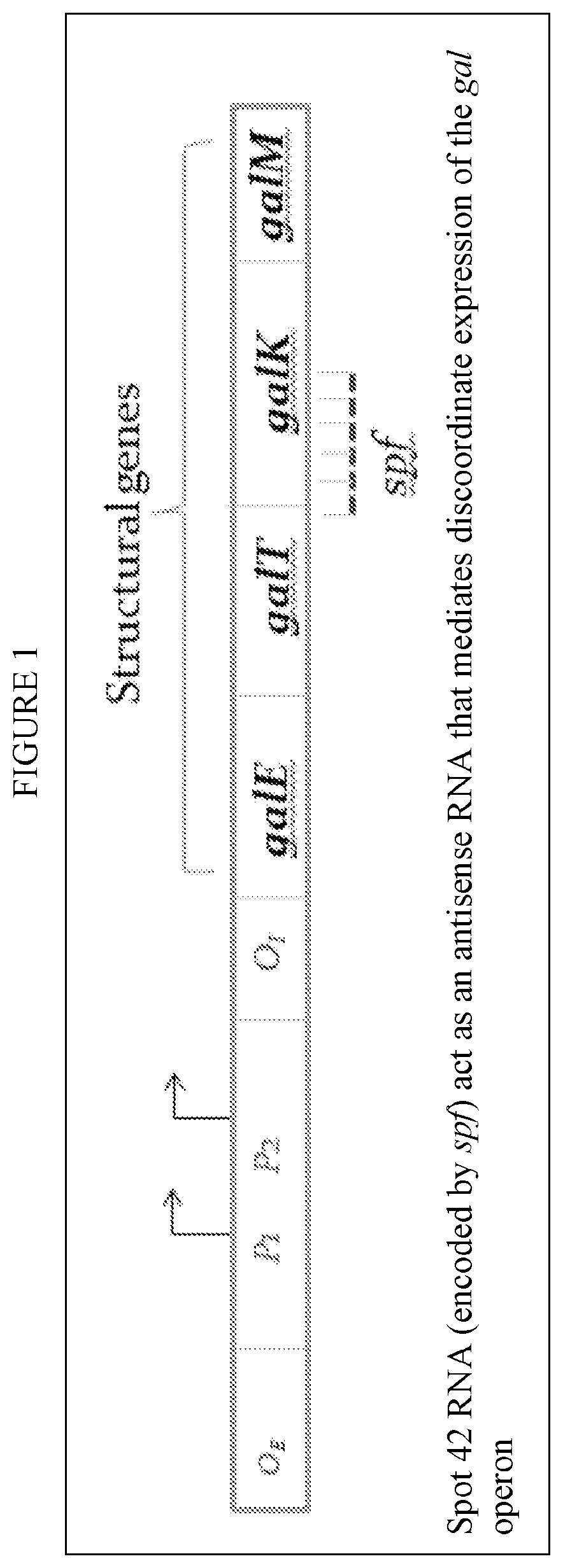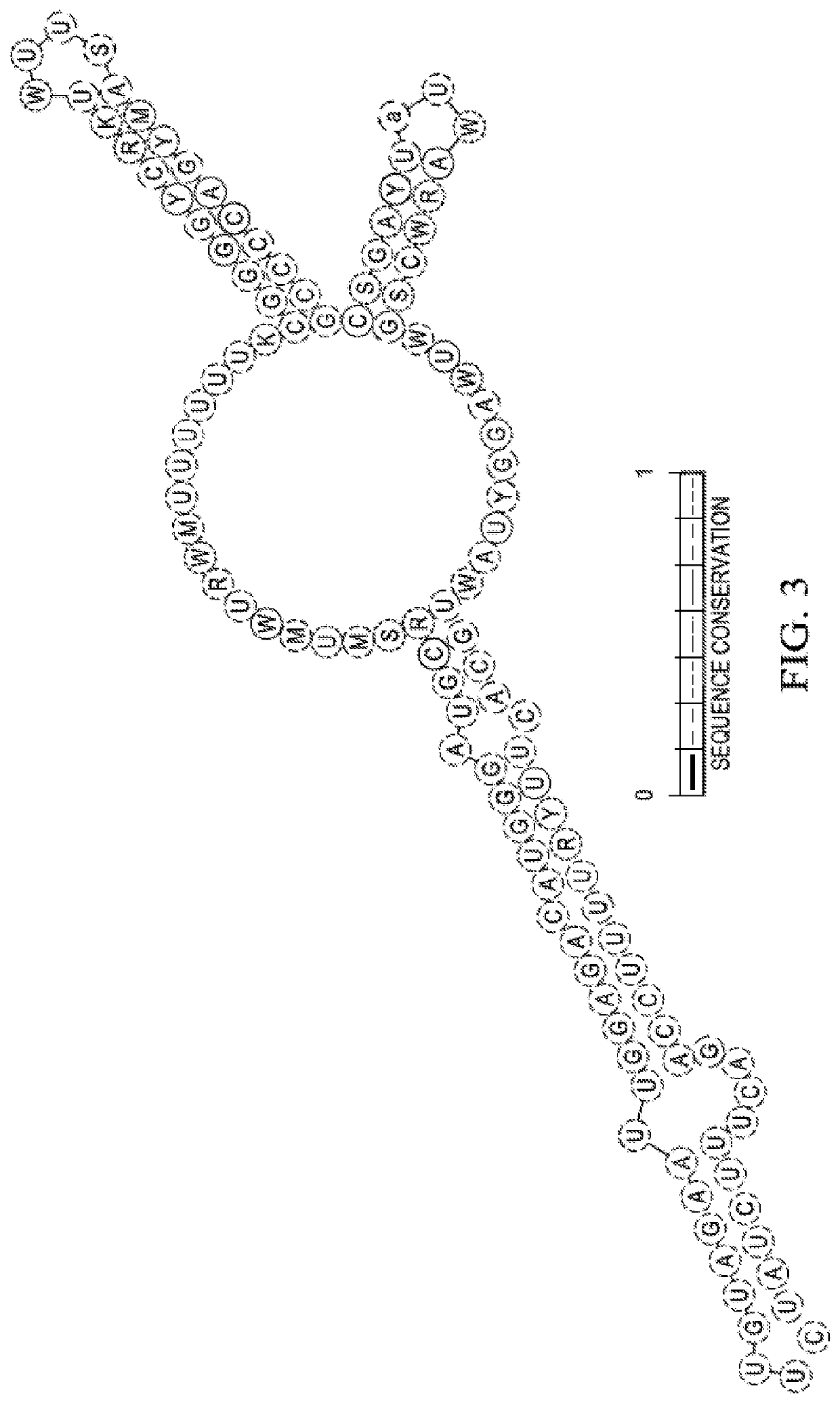Galactose utilization
a technology of galactose and microorganisms, applied in the field of microbial production of products, can solve the problems of lowering the overall carbon flux toward the central carbon metabolism, complex pathway of galactose assimilation in microorganisms, and high difficulty in producing products from inedible and cheap feedstocks, etc., to achieve better enzyme properties, lower km, and higher kcat values
- Summary
- Abstract
- Description
- Claims
- Application Information
AI Technical Summary
Benefits of technology
Problems solved by technology
Method used
Image
Examples
Embodiment Construction
lass="d_n">[0086]The invention provides a novel method of making any bacterial product, utilizing a recombinant bacteria that has an added, exogenus Spot 42 negative galactokinase gene therein or wherein the endogenous gene has been modified to be spot 42 negative. The galK and galM in the gal operan can then be expressed normally and the GalK enzyme can be expressed even under repressed conditions.
[0087]The present described recombinant bacteria are exemplified with respect to the E. Coli strains listed in Table 1 and Bacillus subtilis. However, this is exemplary only, and the invention can be broadly applied to any bacteria strain that is applied in any species having a spf gene in its native or wild type state. The spf gene is highly conserved in Escherichia, Shigella, Klebsiella, Salmonella, Yersinia genera within the Enterobacteriaceae family. In E. coli the spf gene is flanked by polA (upstream) and yihA (downstream). A CRP binding sequence and −10 and −35 promoter sequences a...
PUM
| Property | Measurement | Unit |
|---|---|---|
| affinity | aaaaa | aaaaa |
| OD | aaaaa | aaaaa |
| stability | aaaaa | aaaaa |
Abstract
Description
Claims
Application Information
 Login to View More
Login to View More - R&D
- Intellectual Property
- Life Sciences
- Materials
- Tech Scout
- Unparalleled Data Quality
- Higher Quality Content
- 60% Fewer Hallucinations
Browse by: Latest US Patents, China's latest patents, Technical Efficacy Thesaurus, Application Domain, Technology Topic, Popular Technical Reports.
© 2025 PatSnap. All rights reserved.Legal|Privacy policy|Modern Slavery Act Transparency Statement|Sitemap|About US| Contact US: help@patsnap.com



